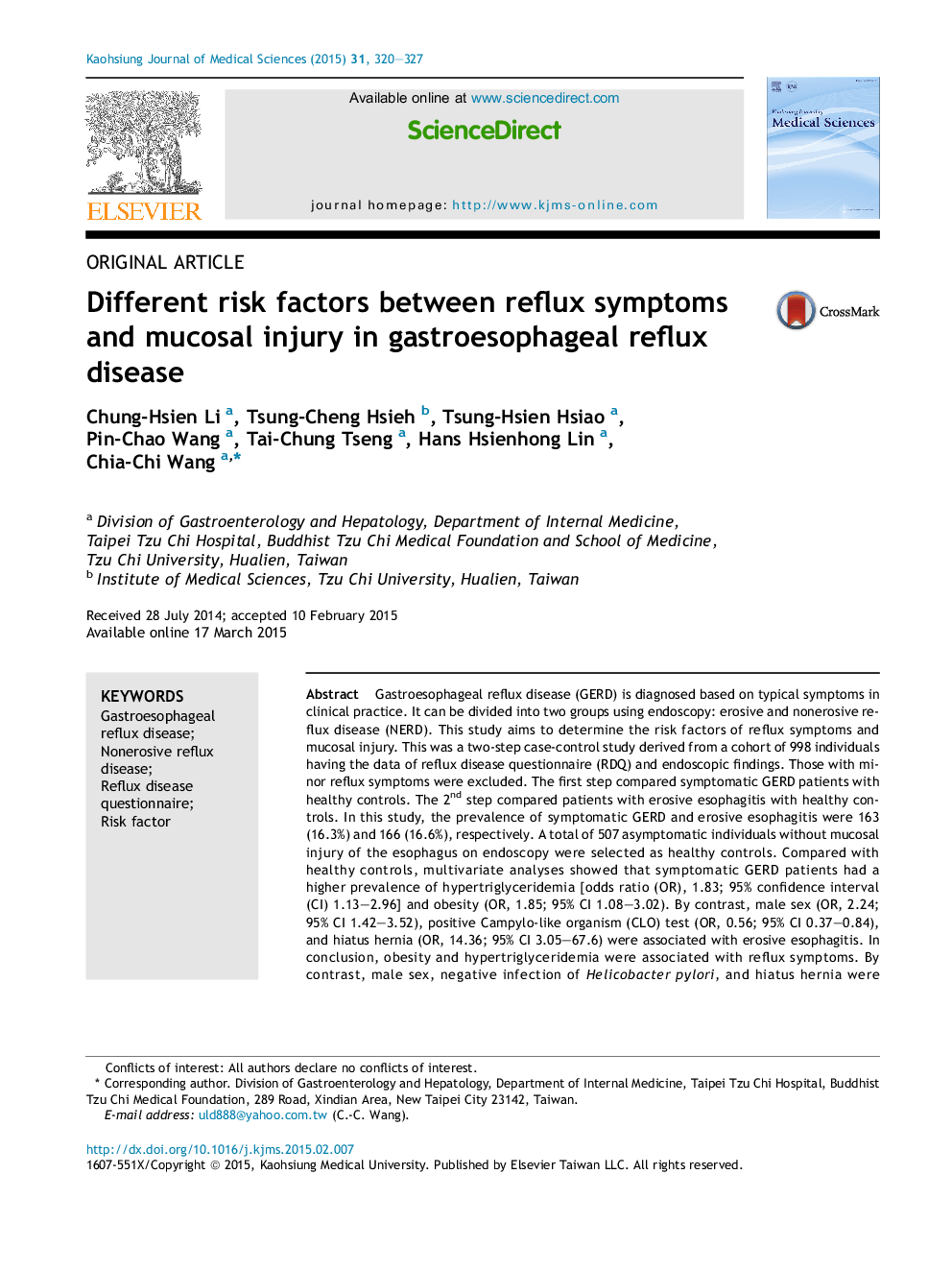| Article ID | Journal | Published Year | Pages | File Type |
|---|---|---|---|---|
| 3485373 | The Kaohsiung Journal of Medical Sciences | 2015 | 8 Pages |
Gastroesophageal reflux disease (GERD) is diagnosed based on typical symptoms in clinical practice. It can be divided into two groups using endoscopy: erosive and nonerosive reflux disease (NERD). This study aims to determine the risk factors of reflux symptoms and mucosal injury. This was a two-step case-control study derived from a cohort of 998 individuals having the data of reflux disease questionnaire (RDQ) and endoscopic findings. Those with minor reflux symptoms were excluded. The first step compared symptomatic GERD patients with healthy controls. The 2nd step compared patients with erosive esophagitis with healthy controls. In this study, the prevalence of symptomatic GERD and erosive esophagitis were 163 (16.3%) and 166 (16.6%), respectively. A total of 507 asymptomatic individuals without mucosal injury of the esophagus on endoscopy were selected as healthy controls. Compared with healthy controls, multivariate analyses showed that symptomatic GERD patients had a higher prevalence of hypertriglyceridemia [odds ratio (OR), 1.83; 95% confidence interval (CI) 1.13–2.96] and obesity (OR, 1.85; 95% CI 1.08–3.02). By contrast, male sex (OR, 2.24; 95% CI 1.42–3.52), positive Campylo-like organism (CLO) test (OR, 0.56; 95% CI 0.37–0.84), and hiatus hernia (OR, 14.36; 95% CI 3.05–67.6) were associated with erosive esophagitis. In conclusion, obesity and hypertriglyceridemia were associated with reflux symptoms. By contrast, male sex, negative infection of Helicobacter pylori, and hiatus hernia were associated with mucosal injury. Our results suggested that risk factors of reflux symptoms or mucosal injury might be different in GERD patients. The underlying mechanism awaits further studies to clarify.
